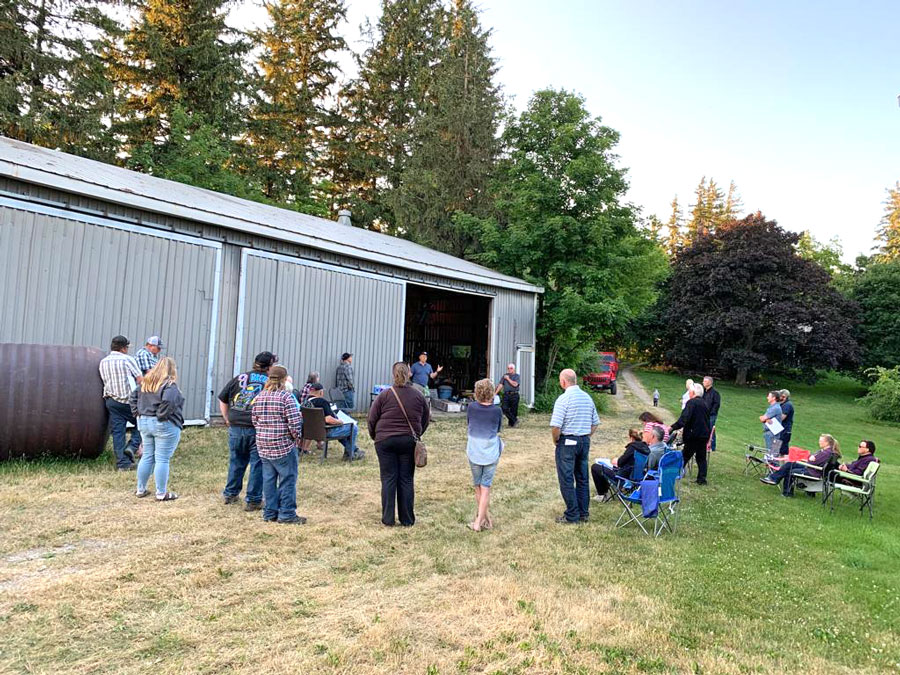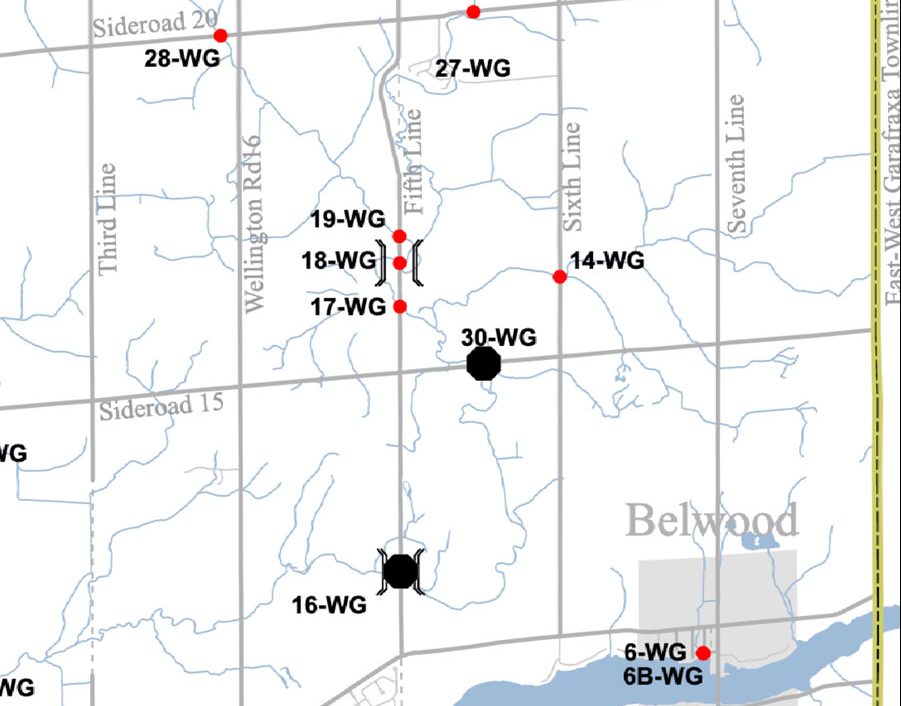FERGUS – Rural residents on the 5th Line north of Belwood Lake are having to detour at least seven kilometres out of their way to get to their homes and businesses because three bridges on their route are closed.
They say with the cost of gas, the detours are adding time and money to their daily operations and are an example of poor communication between the county, the township and residents.
Centre Wellington has closed two of its bridges in the area – bridge 16WG is on 5th Line just north of Wellington Road 19 and bridge 30WG is on Sideroad 15 between 5th and 6th Lines.
Wellington County is also rehabilitating the Penfold bridge on Wellington Road 16 just south of Sideroad 20, so there is currently a detour around this bridge as well. Wellington Road 16 is west of and runs parallel to 5th Line.
The Penfold bridge closed May 24 and work is to be completed by Aug. 26. So this detour is temporary.
Also temporary was the closure of bridge 18WG on 5th Line north of Sideroad 15.
Adam Gilmore, manager of engineering for Centre Wellington, said that bridge closure was unexpected.
“On Friday, June 24 we were made aware of an immediate issue with the bridge,” he said in an interview.
“In an emergency like that we first get it closed to eliminate the potential for people to be hurt. Then we get crews out there and put up signage. In this case we didn’t really have the opportunity to provide advance notice to residents.”
Gilmore said the bridge deck was repaired and the bridge reopened on June 27.
But the closure only compounded the problem for residents and businesses in the area, and their customers.
For Jamie Griffin, the detours that weekend added 18km to a trip that should have been 1.6km.
He moved 14 wagons of hay to his property on 5th Line, and said the detours added a cumulative 504km to his trip – 18km times two (out and back) times 14 trips.
“The input cost for me is through the roof,” he said, not to mention the inconvenience to his customers, who have trouble finding his place with so many bridges out.
“Every day it costs me. Once again, the rural community is left behind.”
Janet Konyer agreed. She has a horse farm on 5th Line and has also been inconvenienced by the bridge closures.
“It’s a constant extra drive – to get mail, to get to work, longer for clients with horse trailers, for the vet. And FedEx can never find us,” she said.
Konyer said the bridge on Sideroad 15 has been out for 15 years – long enough that her family has named it “Rusty.”
And even before 16WG was closed, it had a height restriction, which meant farm equipment, emergency vehicles and school buses couldn’t cross it.
Concern over emergency response times
Konyer said the biggest issue is for emergency vehicles. She said more than once she’s seen ambulances advance north on 5th Line, encounter the closed bridge and have to turn around.
“Seconds count. I just don’t understand why emergency vehicles don’t know about the closures,” she said.
Mark Montgomery hosted a meeting with about 32 of his neighbours at his 5th Line property on June 28 to air their grievances and figure out a plan of action.

Residents of the 5th Line in Centre Wellington gathered on June 28 to air their grievances about bridge closures in the vicinity of their homes and businesses. Submitted photo
Centre Wellington councillor Stephen Kitras was in attendance and said he mostly listened and brought their questions to township staff.
“I encouraged them to delegate to council to make sure those bridges get done,” Kitras said.
“I live in rural and sometimes the rural voice doesn’t get heard consistently. And I hope scheduling (of the bridge construction) is done so they are not trapped on their road again.”
Montgomery said bridge closures have long been a problem, especially in rural Centre Wellington.
“It’s not just the closures; it’s the lack of maintenance,” he said, adding spending more on maintenance would prolong the life of the bridges and keep them open longer.
He also questioned how the township prioritizes which bridges come first.
Montgomery works in construction and said he’s familiar with how to build bridges. He said the emergency closure of bridge 18WG could have been repaired in a few hours and didn’t need to be closed the entire weekend.
“Why did they close it for the weekend when the fix was so easy? They just don’t care about the residents in the area,” he said.
Gilmore, at the township, said 16WG had a load restriction and was closed in March 2021. It is slated for replacement next year.
Bridge 30WG has been closed for 12 years and is in the capital budget for replacement in 2027.
Gilmore said bridges and culverts are part of the township’s asset management plan.
“That’s where we lay out the condition of all the township’s assets, including bridges,” he said.
Work is prioritized according to its condition, the risk of failure and the consequence of failure with “failure” meaning closing a bridge.
Gilmore said north-south routes have a bigger impact on traffic and emergency response than east-west routes.
“We look at traffic volume, emergency response and create a ranking system,” he said. “Through this process some bridges, like 30WG, fall lower in priority.”
He said the bridge replacement process takes about three years. In year one, they conduct a municipal environmental assessment and recommend replacing, rehabilitating, or removing a bridge. Year two is when detailed design is done and year three is for construction.
So it’s not that simple to change course and bump one bridge ahead of another.
Gilmore said emergency response teams are informed of bridge closures “and when it’s foreseeable, we provide notice to residents too.”
He said there is good communication between the township and the county, and they try to coordinate road and bridge work to minimize delays and detours for residents but it’s practically impossible to not inconvenience someone.
Gilmore suggested people who want to address council on an issue should reach out to their local councillor or contact the clerk, who can advise on an appropriate meeting date and process.
Clerk Kerri O’Kane can be reached at kokane@centrewellington.ca.
Konyer said the group of residents is figuring out its next step – how to bring the problem to council’s attention and, ultimately, how to solve it.
“We wish council would be more forthright with budgeting,” she said. “This better be an election issue – it has to be. Our fight is not over.”




